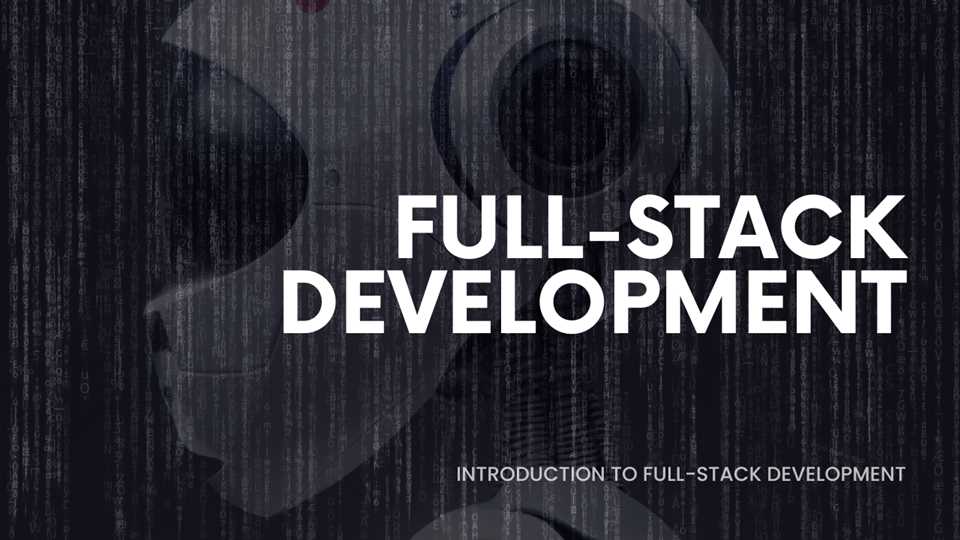
Breaking Down Full-Stack Development: The Ultimate Roadmap to Success

Published By:- Ved PrakashJan 27, 2024
Full-stack development involves mastering both frontend and backend technologies, making developers architects of seamless web applications. Key programming languages, such as JavaScript, Python, and Java, play essential roles, each with distinct strengths. JavaScript is pivotal for frontend development, Python excels in backend and data analysis, while Java offers portability for enterprise-level and Android applications.
Introduction to Full-Stack Development
Full-stack development is the art of mastering both frontend and backend technologies. As a full-stack developer, you are the architect of seamless and scalable web applications.
Essential Programming Languages
To embark on your full-stack journey, start by mastering key programming languages like JavaScript, Python, and Java. Each language has its strengths, and understanding when to use them is crucial.
JavaScript: The backbone of frontend development, learn to manipulate the Document Object Model (DOM) for interactive and dynamic user interfaces.
Python: Versatile and widely used, Python is excellent for backend development, data analysis, and machine learning applications.
Java: Known for its portability, Java is a robust language used in enterprise-level applications and Android development.
HTML/CSS: Fundamental for structuring web content and styling, these languages are the building blocks of any web application.
Frontend Development Technologies
Frontend development focuses on creating a visually appealing and user-friendly interface. Explore the following technologies:
React.js: A popular JavaScript library for building dynamic user interfaces, especially for single-page applications.
Vue.js: Known for its simplicity, Vue.js is a progressive framework for building interactive web interfaces.
CSS Frameworks (e.g., Bootstrap): Streamline your styling with pre-built components, ensuring a responsive design.
Responsive Design: Master the art of creating applications that adapt seamlessly to various devices and screen sizes.
Backend Development Frameworks
Backend frameworks handle server-side operations and data management. Consider the following:
Node.js: Leverage JavaScript on the server-side, promoting a unified language throughout your application.
Django (Python): A high-level Python web framework, providing rapid development and clean, pragmatic design.
Ruby on Rails: A robust framework for building database-backed web applications, emphasizing convention over configuration.
Express.js: A minimal and flexible Node.js framework for building web and mobile applications.
Database Management Systems
Efficient data storage and retrieval are critical. Explore database management systems like:
MySQL: A popular open-source relational database management system, suitable for various applications.
MongoDB: A NoSQL database, perfect for handling unstructured data and scalable applications.
PostgreSQL: Known for its advanced features and extensibility, PostgreSQL is a powerful open-source database system.
Version Control Best Practices
Collaborative coding requires effective version control. Implement these best practices:
Git Basics: Master the fundamentals of Git for tracking changes, collaborating with others, and managing project versions.
Branching Strategies: Adopt effective branching strategies to maintain a clean and organized codebase.
Pull Requests and Code Reviews: Foster collaboration through systematic code reviews and pull requests.
Embracing DevOps in Full-Stack
DevOps integrates development and operations for continuous delivery. Follow these steps:
Automated Testing: Implement automated testing to catch bugs early in the development process.
Continuous Integration/Continuous Deployment (CI/CD): Streamline the release process with automated CI/CD pipelines.
Infrastructure as Code (IaC): Manage infrastructure programmatically for consistency and scalability.
Effective Project Management
Agile methodologies are key to managing projects efficiently. Consider:
Scrum: Embrace the Scrum framework for iterative and collaborative development.
Kanban: Visualize workflow and optimize efficiency with the Kanban methodology.
Sprint Planning: Break down tasks into sprints for focused and achievable development goals.
Mastering Software Engineering Principles
As a full-stack developer, understand fundamental software engineering principles:
Design Patterns: Implement reusable solutions to common problems with design patterns.
Code Refactoring: Enhance code readability and maintainability through systematic refactoring.
Testing Strategies: Adopt comprehensive testing strategies for robust and reliable applications.
